The Murals at Oventic: A Photo Essay
Lorie Novak
Back
Entering Oventic the first time in 2009 and seeing the road, lined with painted houses, going down the hill, is a visually overwhelming experience. The first building as we pass through the gates is the Sociedad Cooperative Arte de Mujers por La Dignidad (Arts Cooperative of the Women of Dignity), which has murals on either side of the door. On the right there is a mural with a man and women holding guns with a child in between them holding the Mexican Flag. The woman is surrounded by calla lilies like those painted by the great Mexican muralist Diego Rivera. They form an aura around her much like the one around the Virgin of Guadalupe, whom we see depicted on the walls of the medical building in the center of the caracol. To the left of the door a group of women stand together—a few of the women gaze at the viewer, but most look to the right and seem to be on the move. Some have guns; one has a guitar. The woman on the far left looks like the artist Frida Kahlo. A jaguar and a young boy holding a gun complete the group. Sometime between my trips in 2010 and 2013, a masked snail was added to the group. I don’t notice this until my return to New York. I am taken aback by the originality of the murals but surprised by the art historical references to Diego and Frida. Later on, I see the Zapatista version of Matisse’s famous dancers.
The next building has Oficina de Mujeres por la Dignidad (Office of Women for Dignity) painted in huge letters on it. A masked woman with a baby on her back is painted to the right of the door. I take a photograph to put on my office door at New York University. When I return in 2013, she has been repainted—her left arm is raised in the air with a flower in hand, and a gun is slung over her right shoulder. The baby is still on her back.
Walking through Oventic, the murals are my guides. It is hard to resist frantically photographing every one. I wander away from the group so I can slow down and take them in. It is the images of women I notice most. They are looking at me, standing guard with guns, reading, weaving, dancing, singing, flying, and holding up the sky. It wasn’t until my third trip that I became cognizant that words included in the murals were in Spanish, with only a minority also written in Tzeltal or Tzotzil, the indigenous first languages of many Zaptistas.
Seeing my favorite murals again on my second and third trips was like seeing old friends. I visited them all, re-photographing some. I could tell that they are well cared for—my favorite one of the woman with the red bandana clearly had been repainted and restored: she was glowing in 2013. Some seemed to have been painted over, and new ones had been added. It wasn't until I got home and looked through my photographs from previous years that I saw how many had changed over the years. When getting face-lifts, they are also transformed (see Luis Vargas-Santiago's essay for a thorough analysis of the murals). This pastiche effect is ideological, aesthetic, and political, as murals are constantly updated to respond to current conditions (not least of all the weather).
Even when viewing the photographs on my computer, I can still hear the walls speak to me about hope, patience, love of the land, love of books and education, the importance of community, safe sex, and how corn is life, freedom lives, and the struggle continues.
| Previous page on path | Essays, page 12 of 17 | Next page on path |
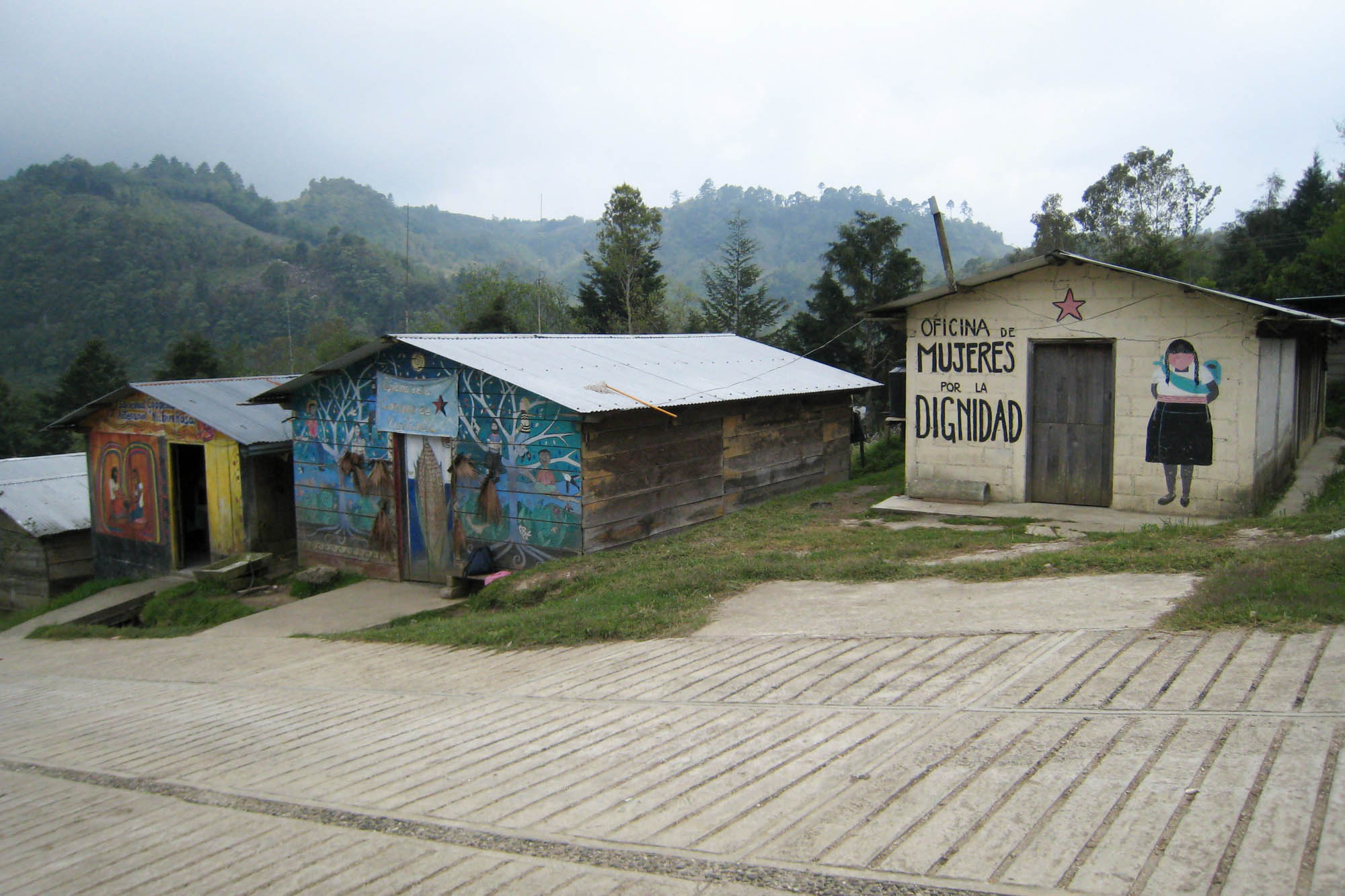
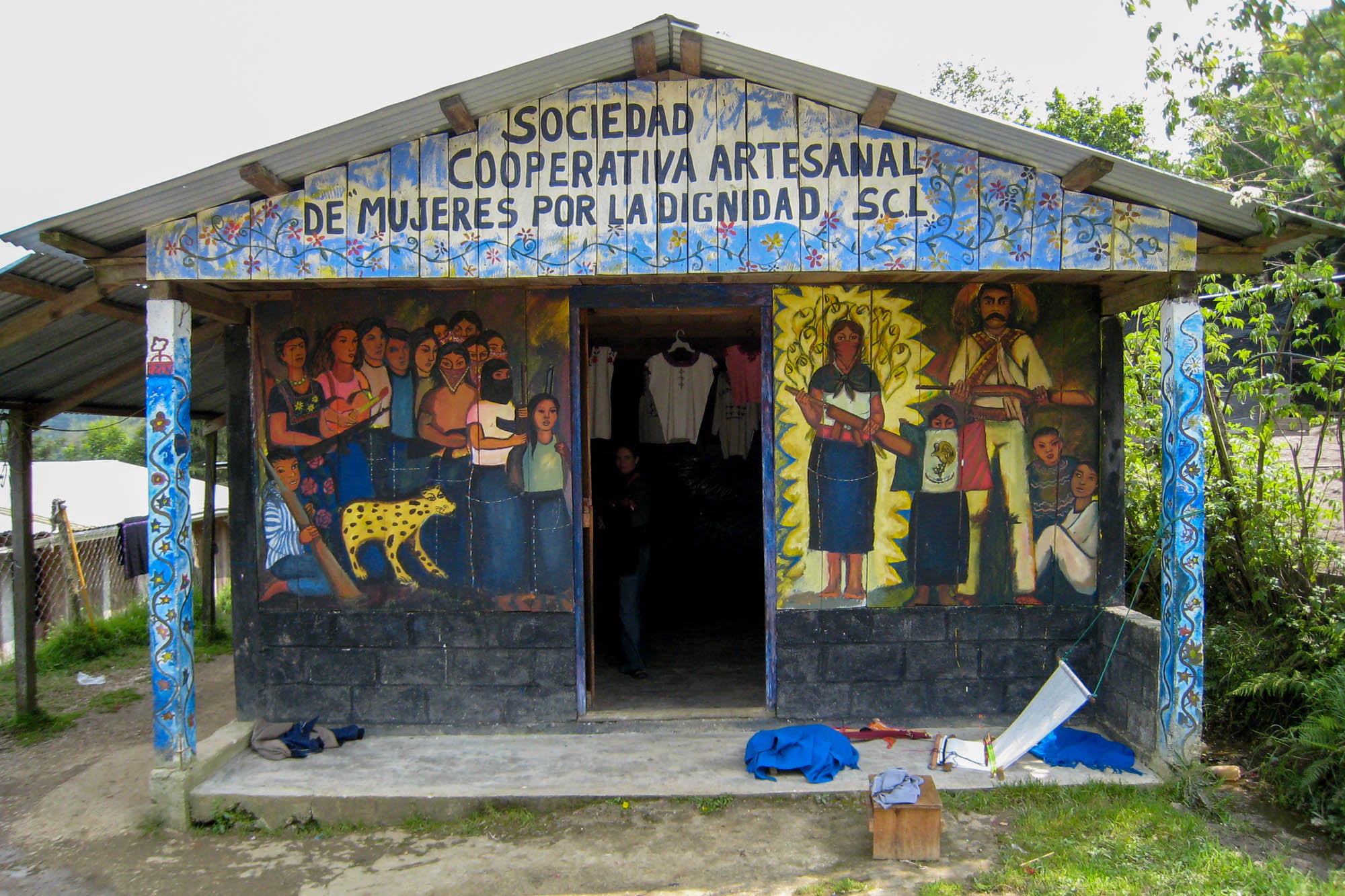
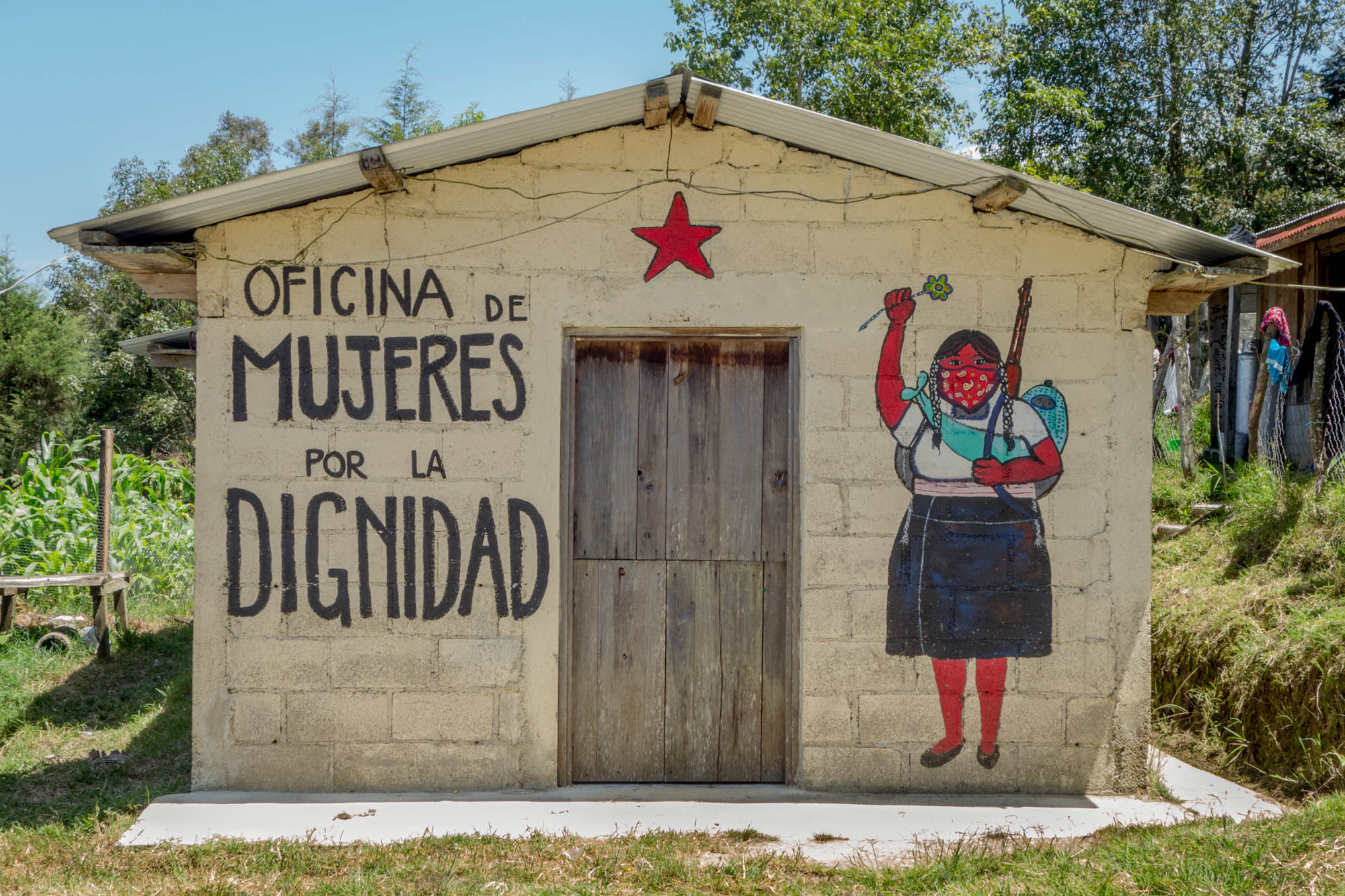
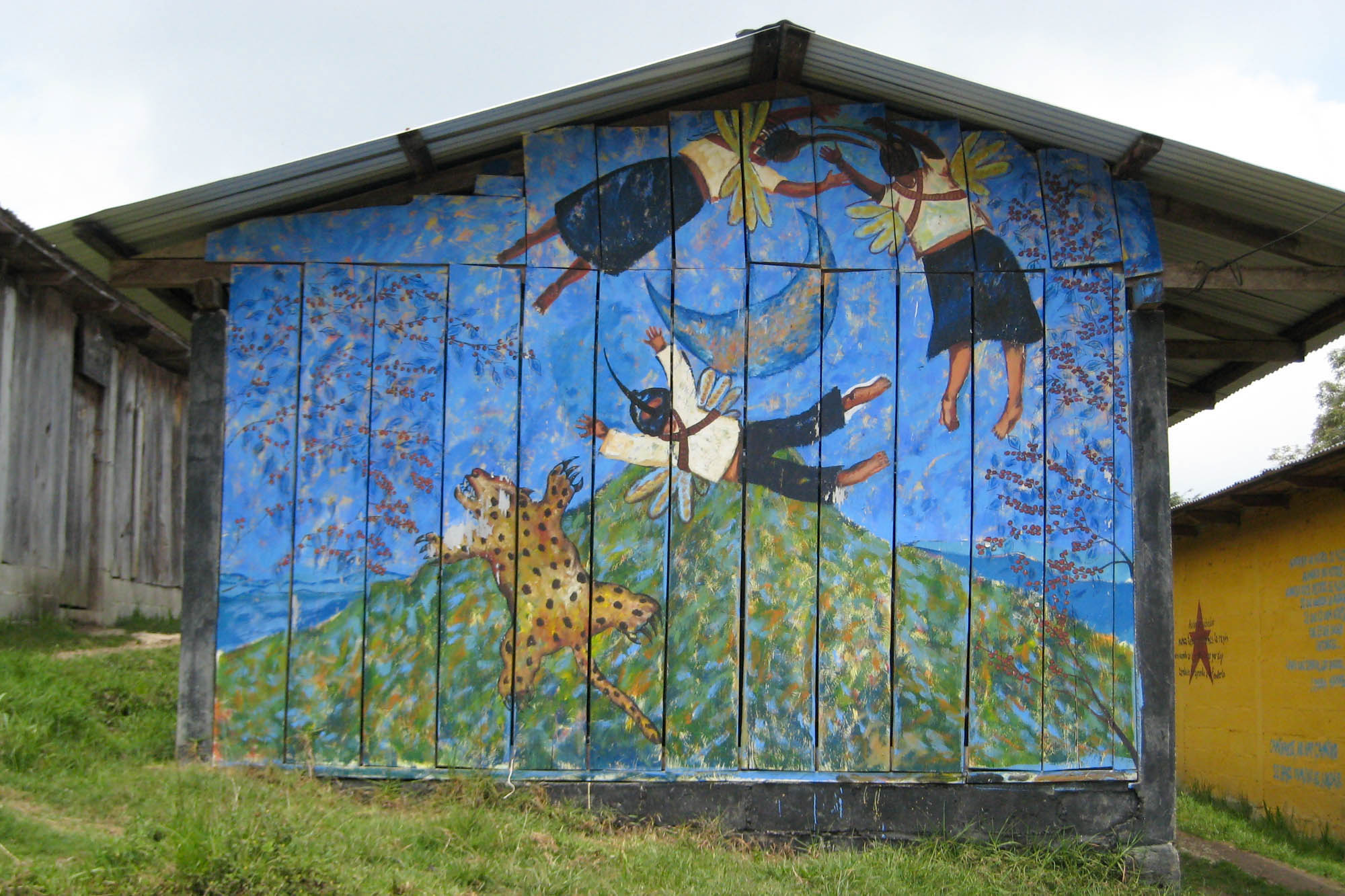
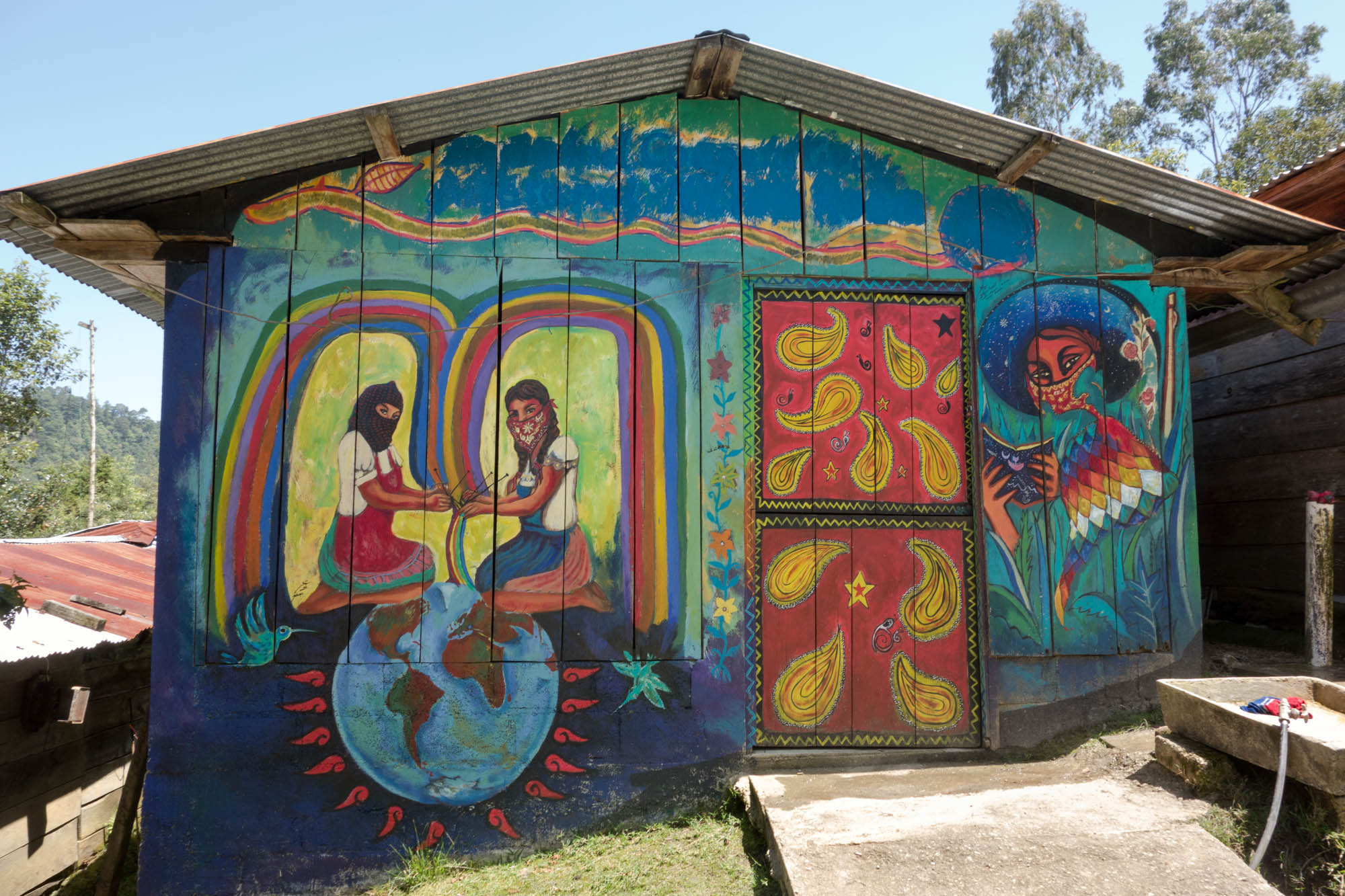
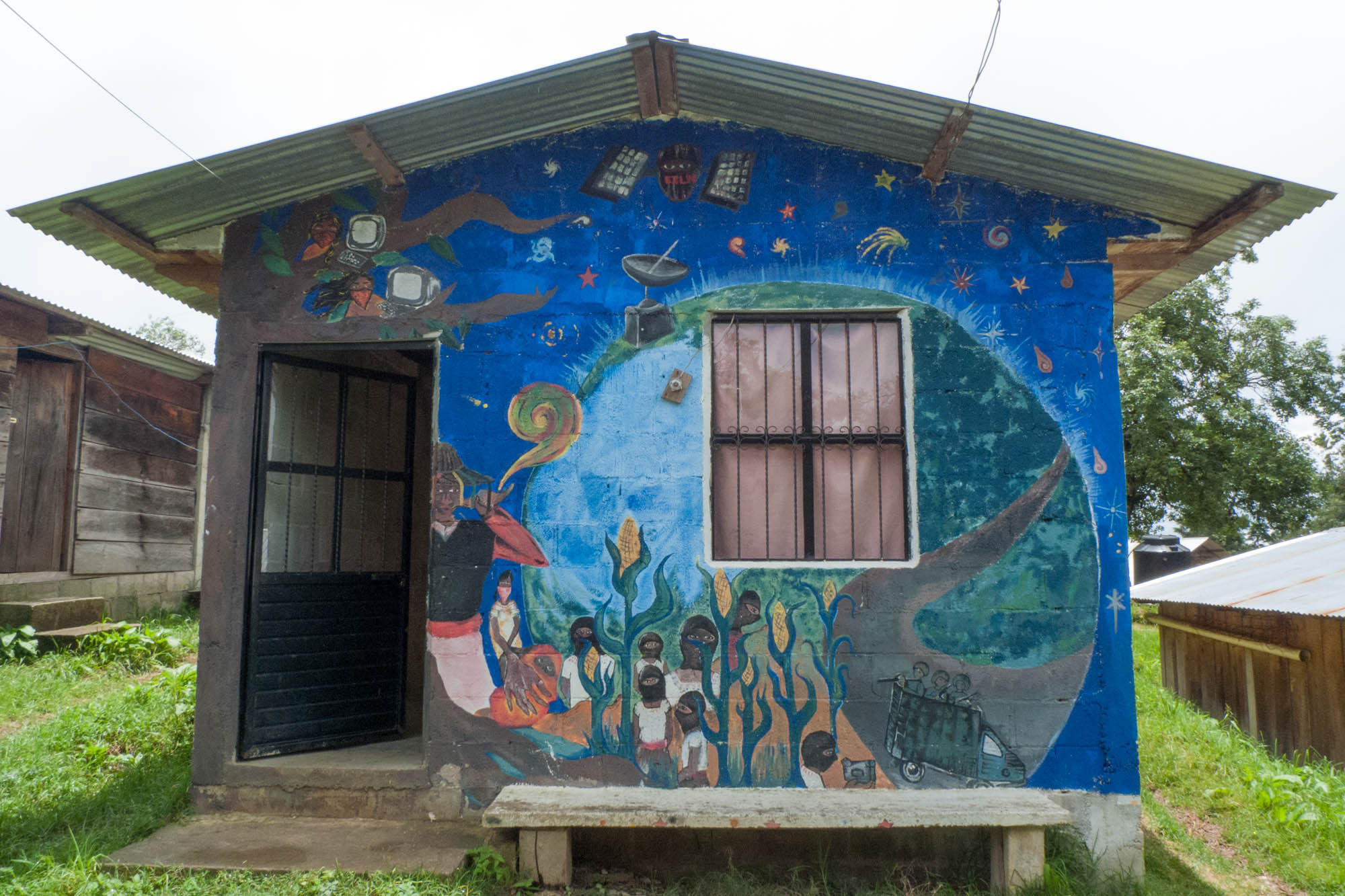
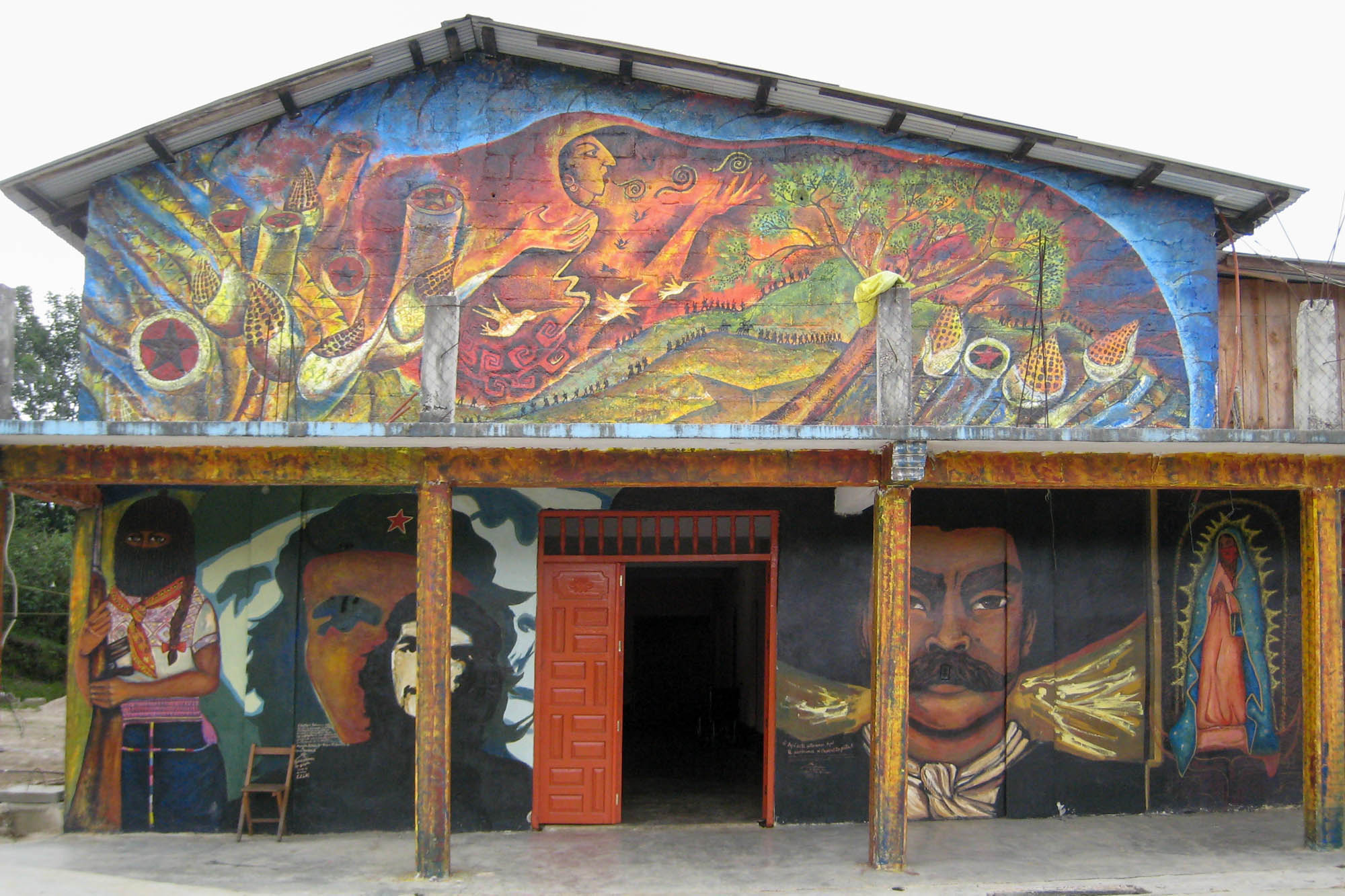
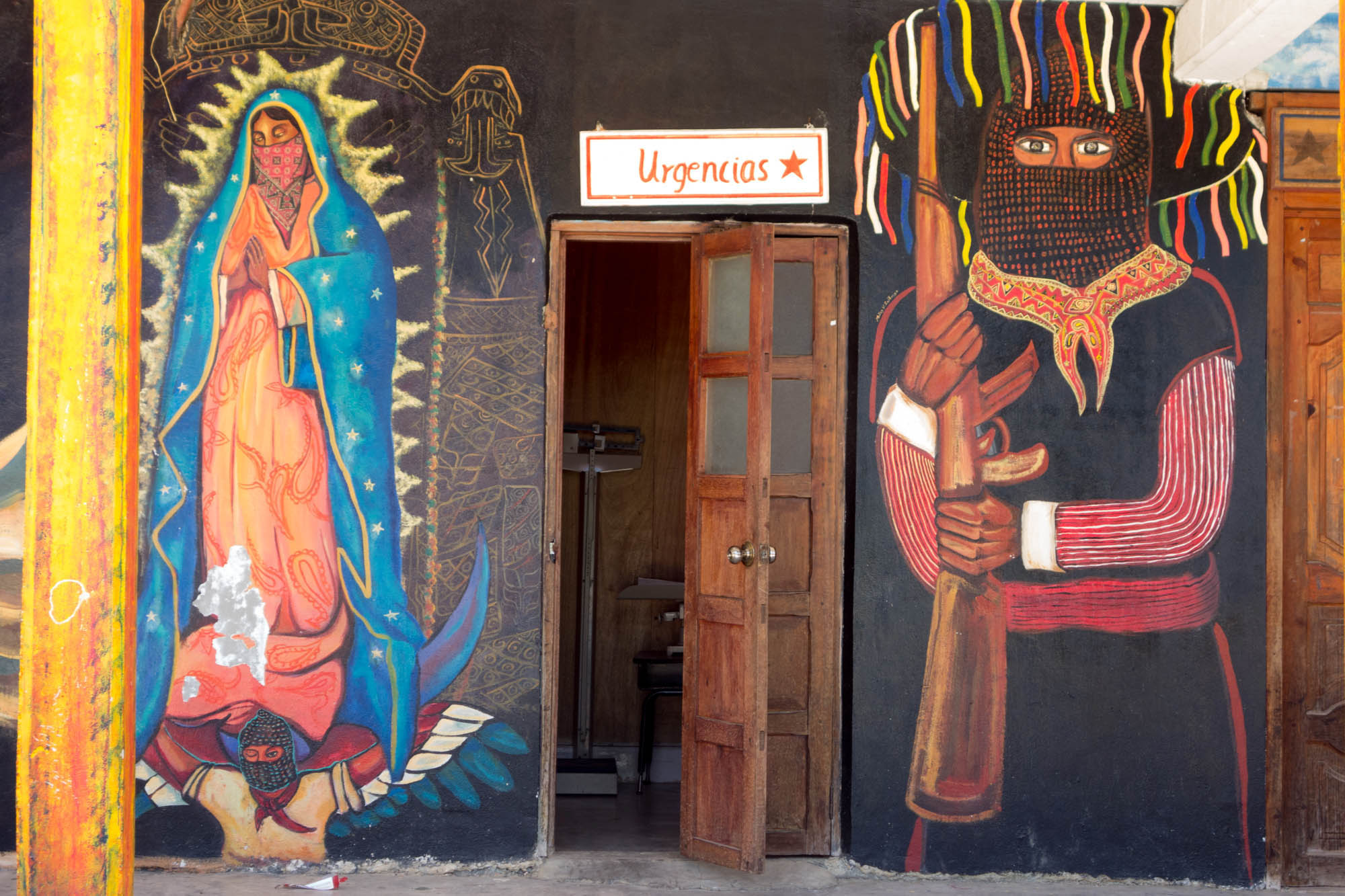
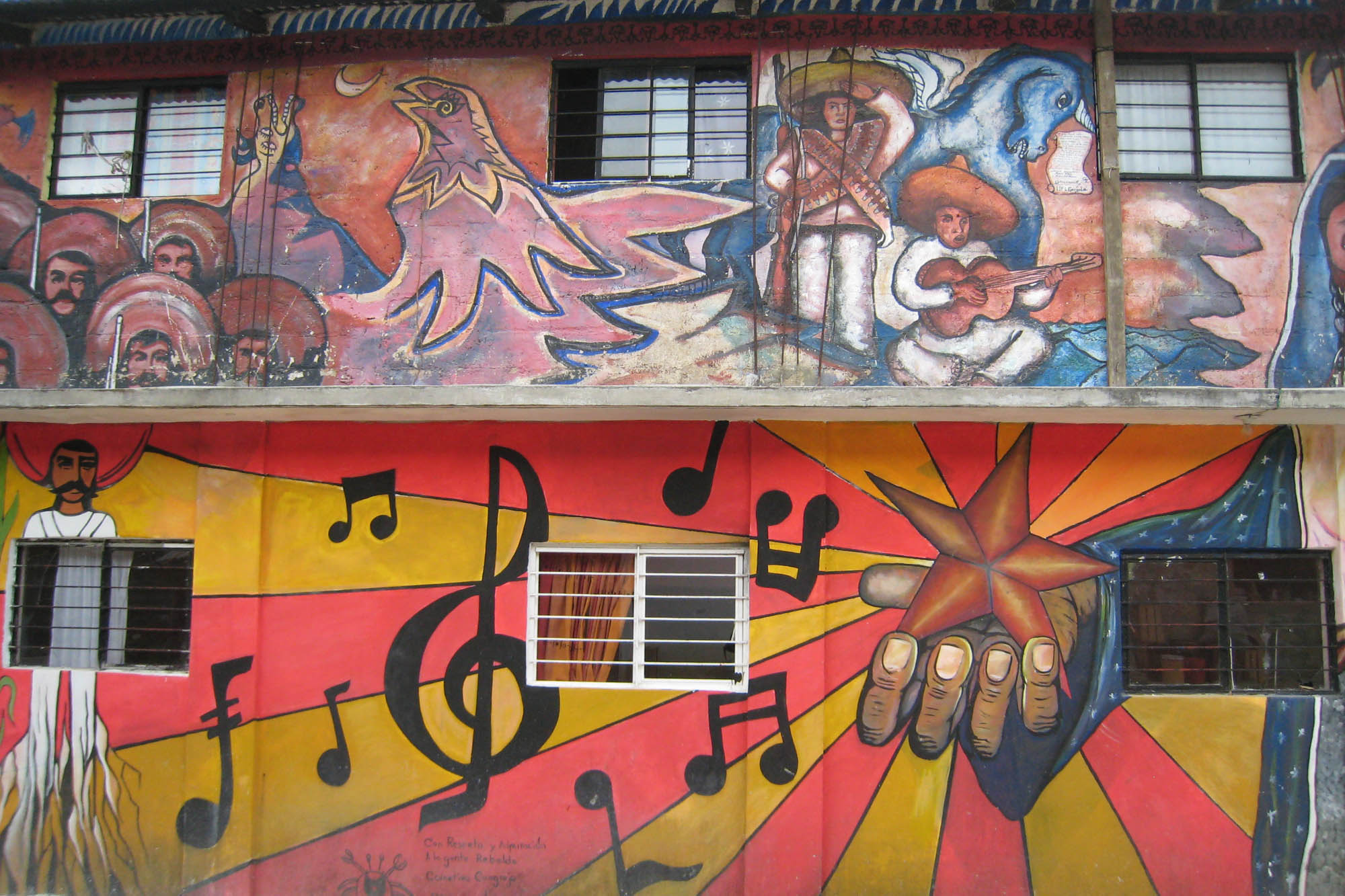
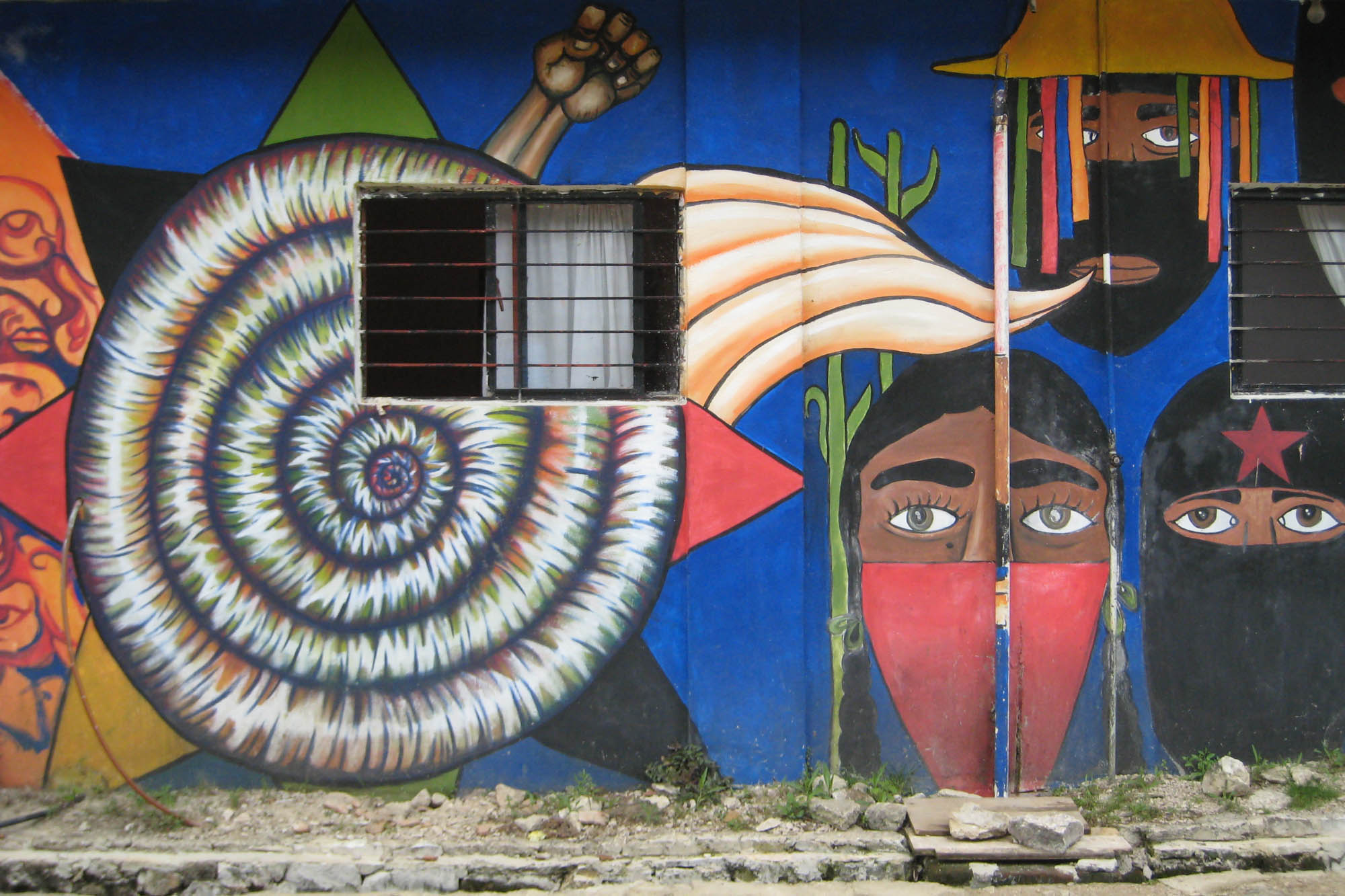
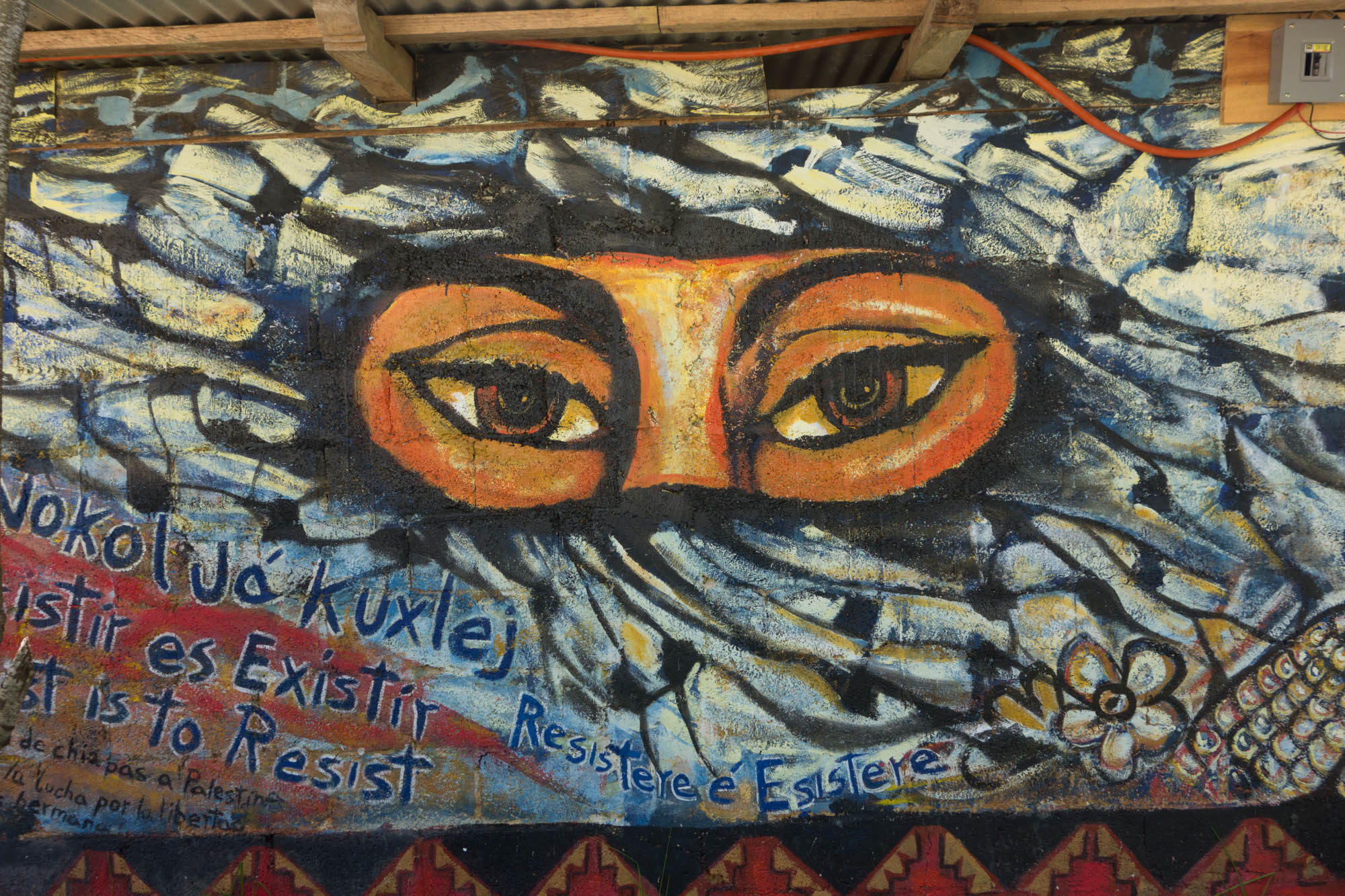

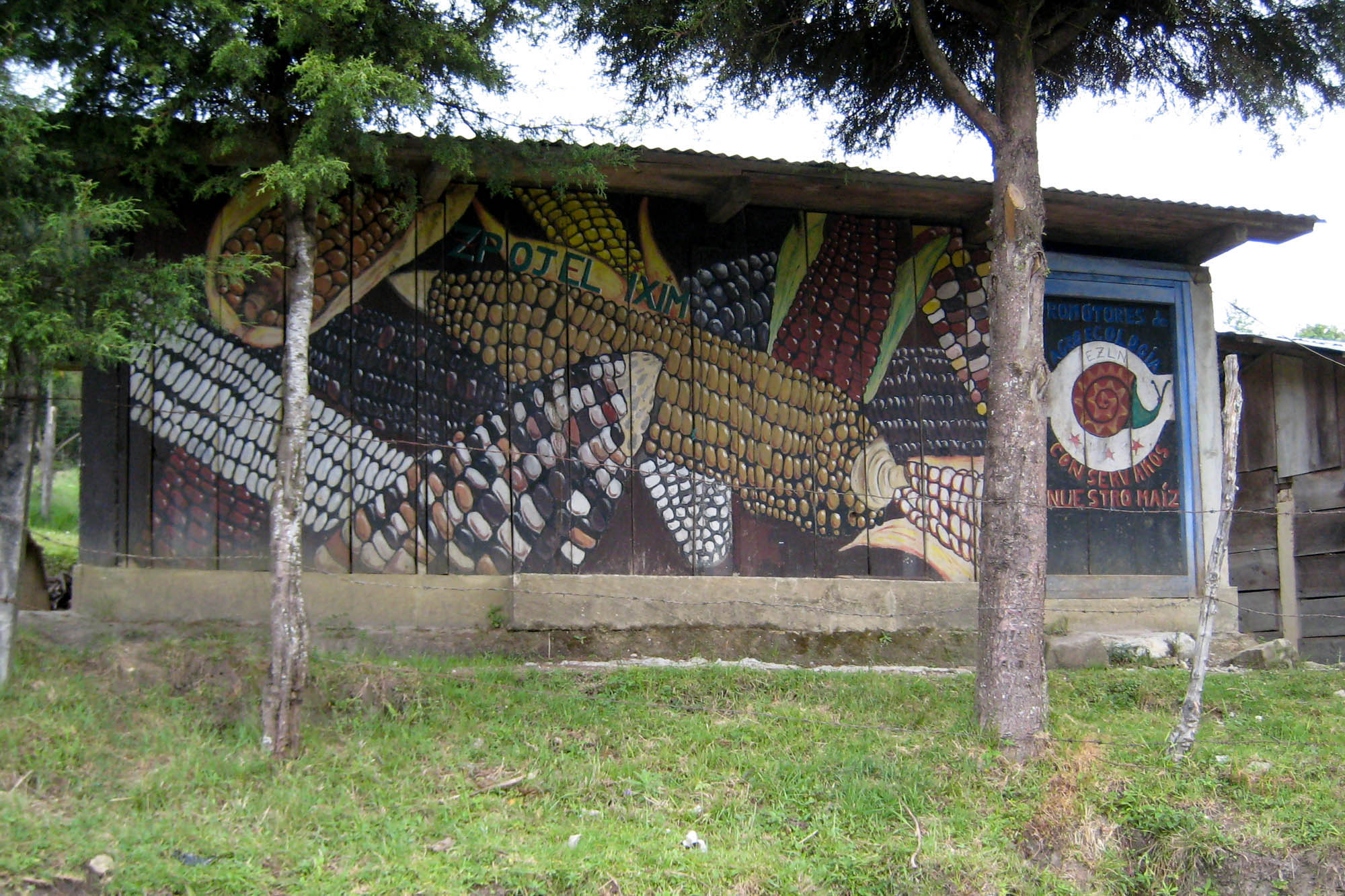
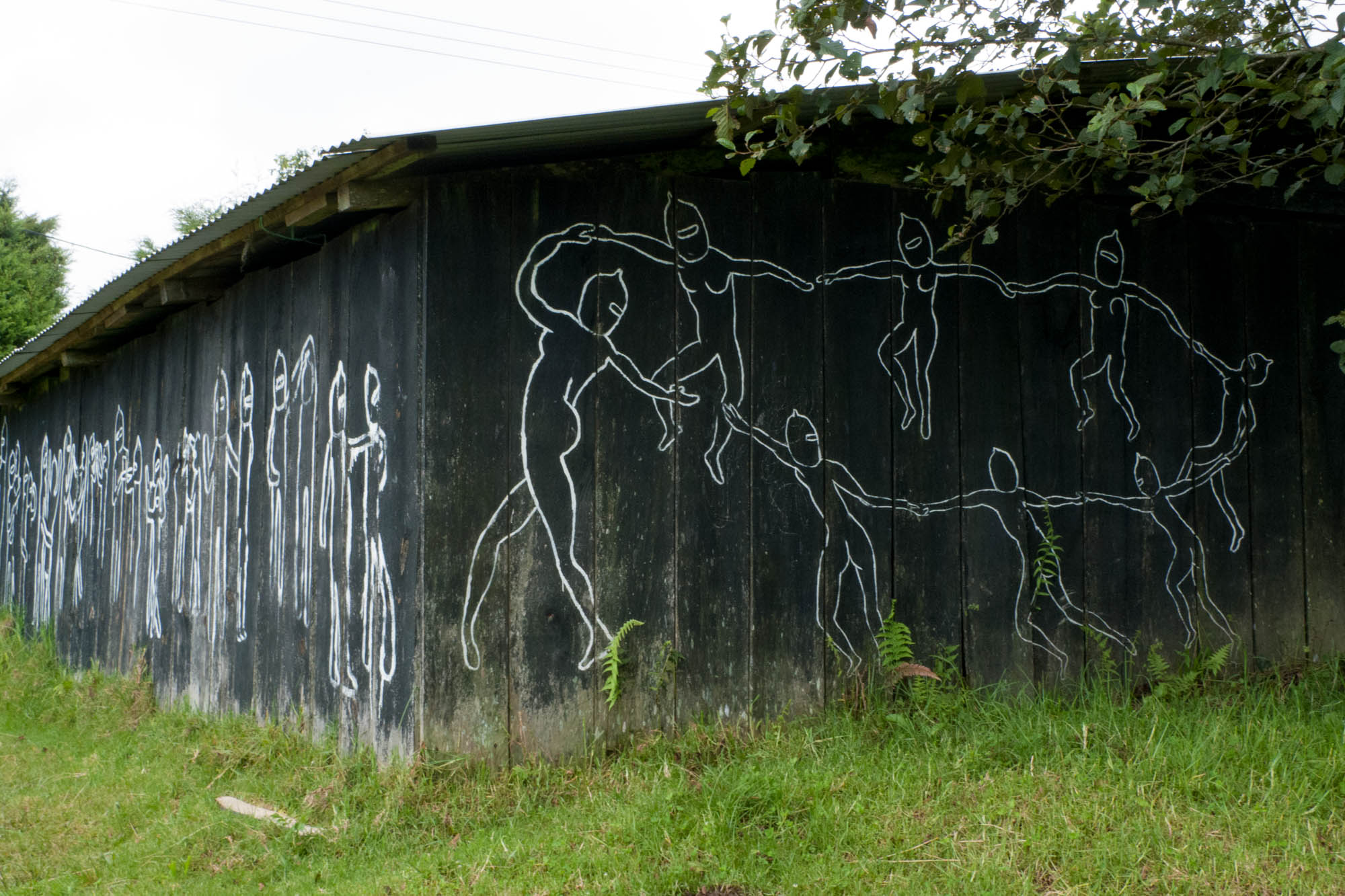
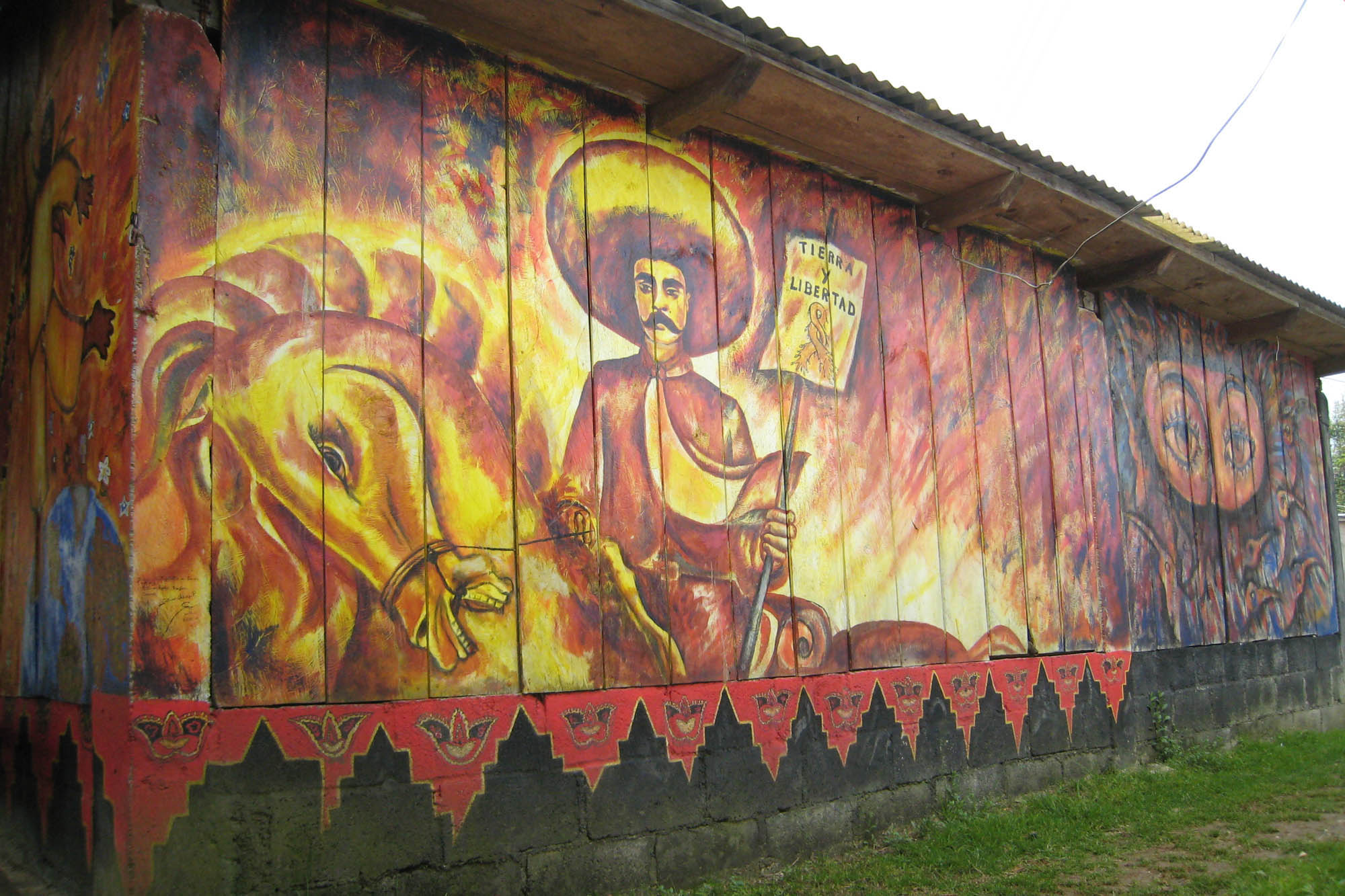
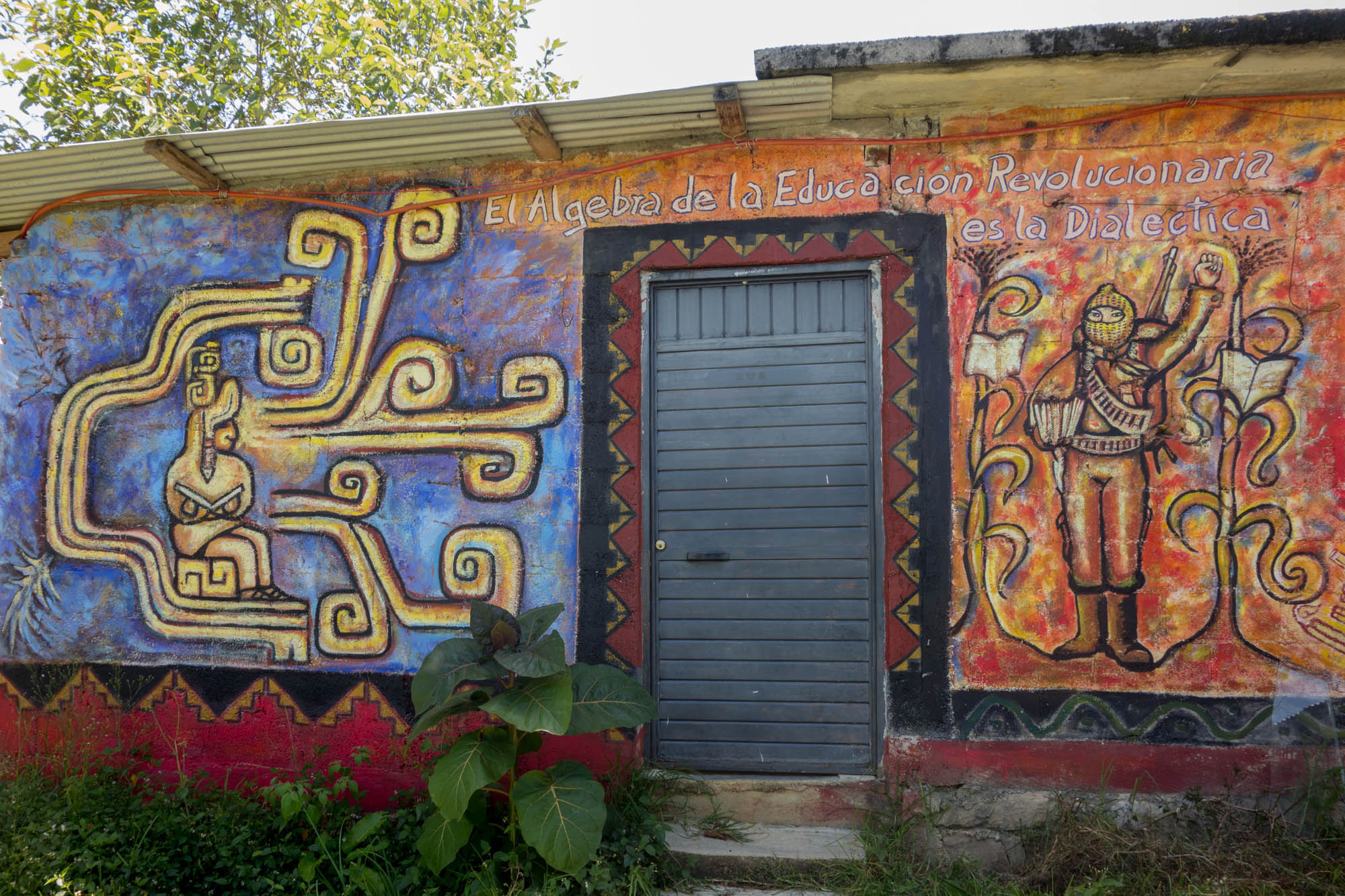
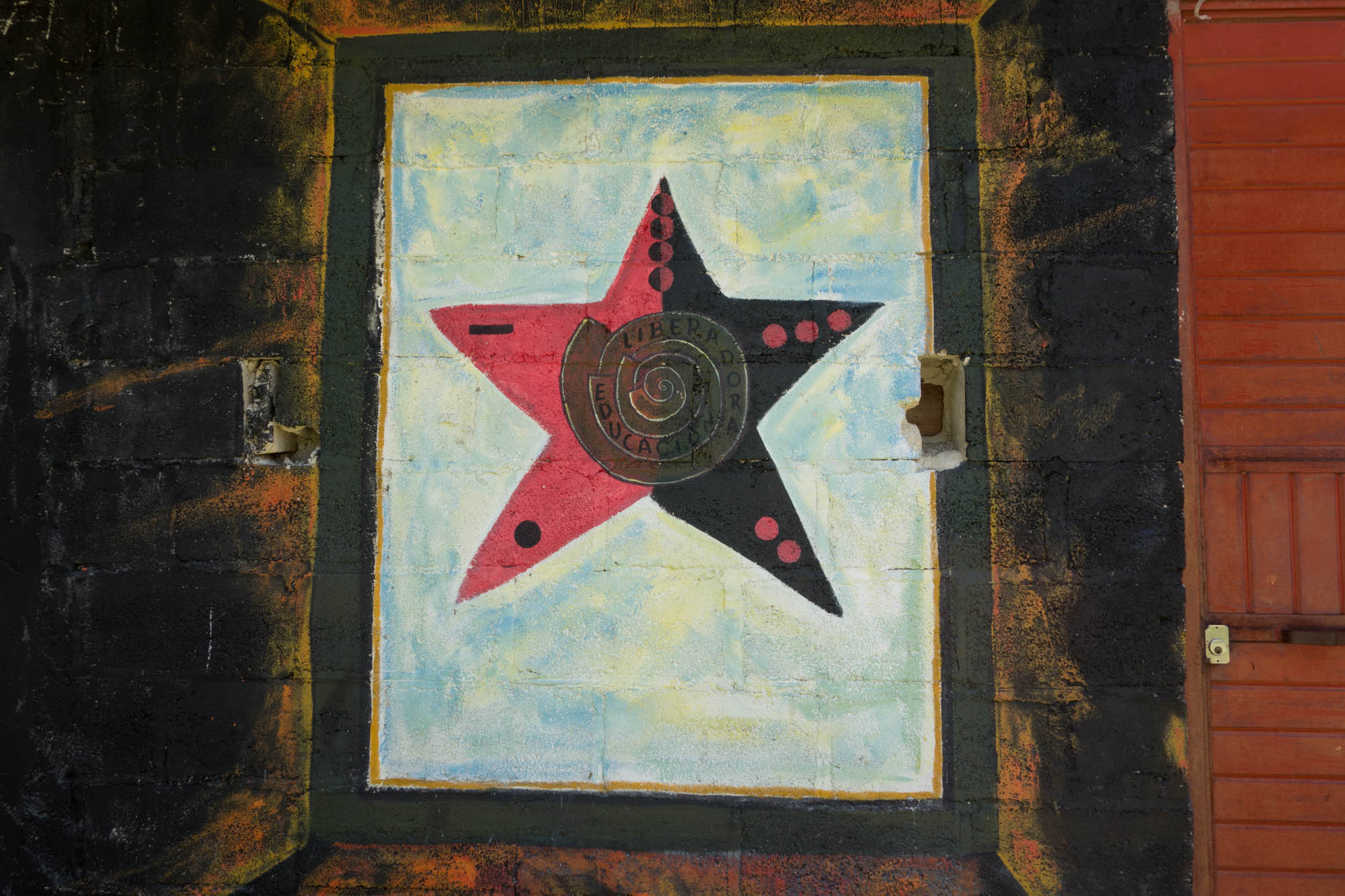
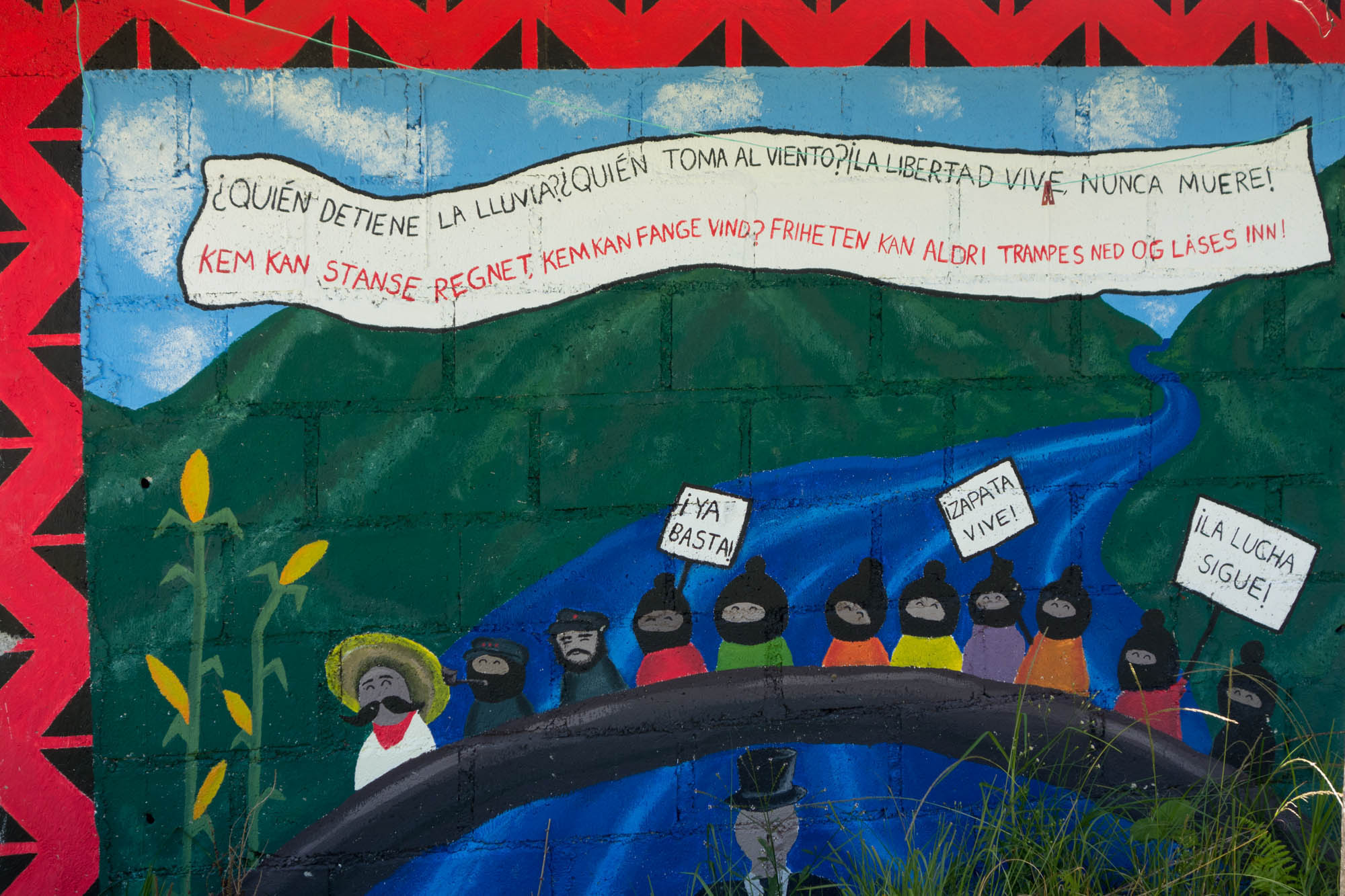
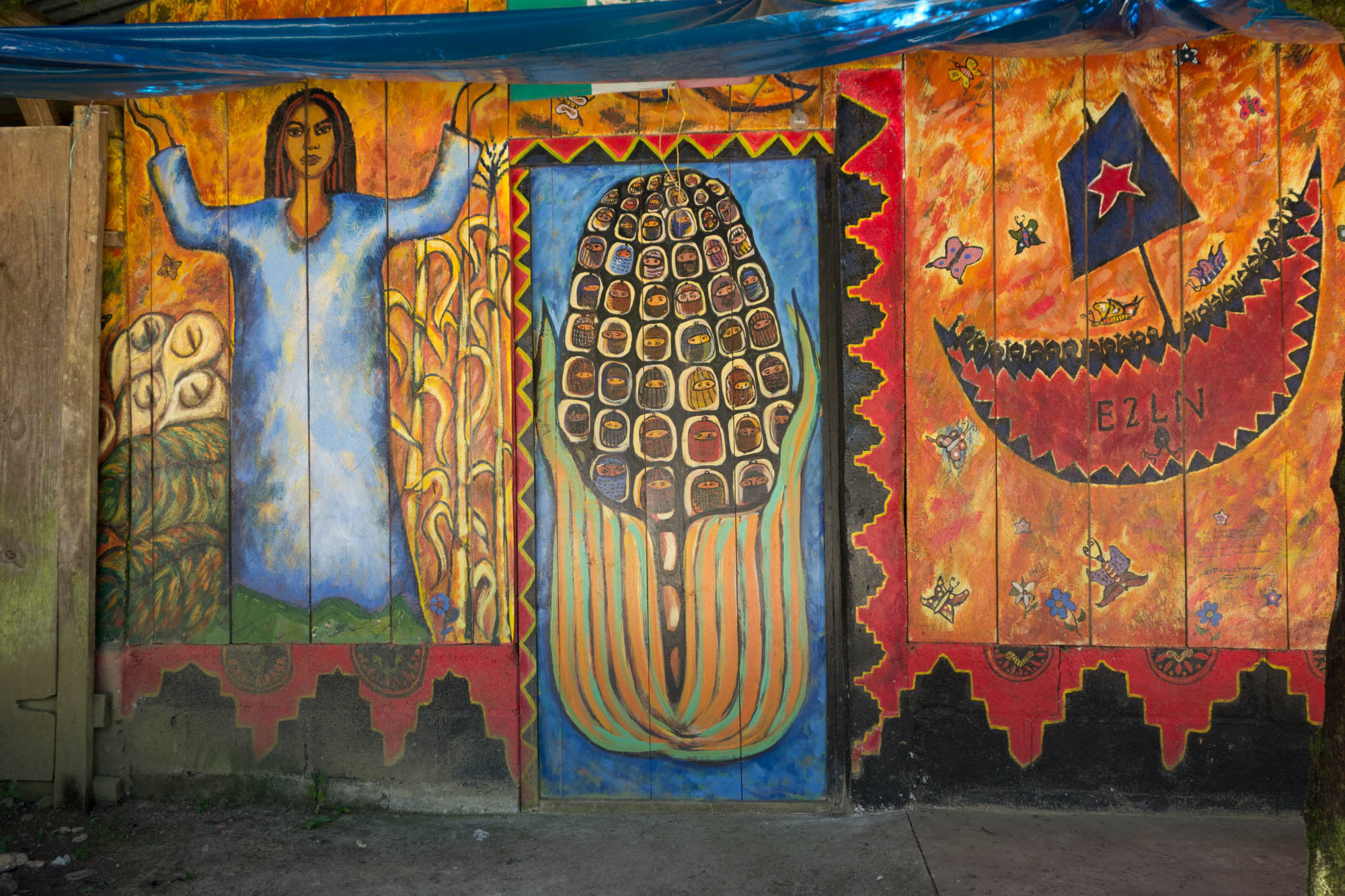
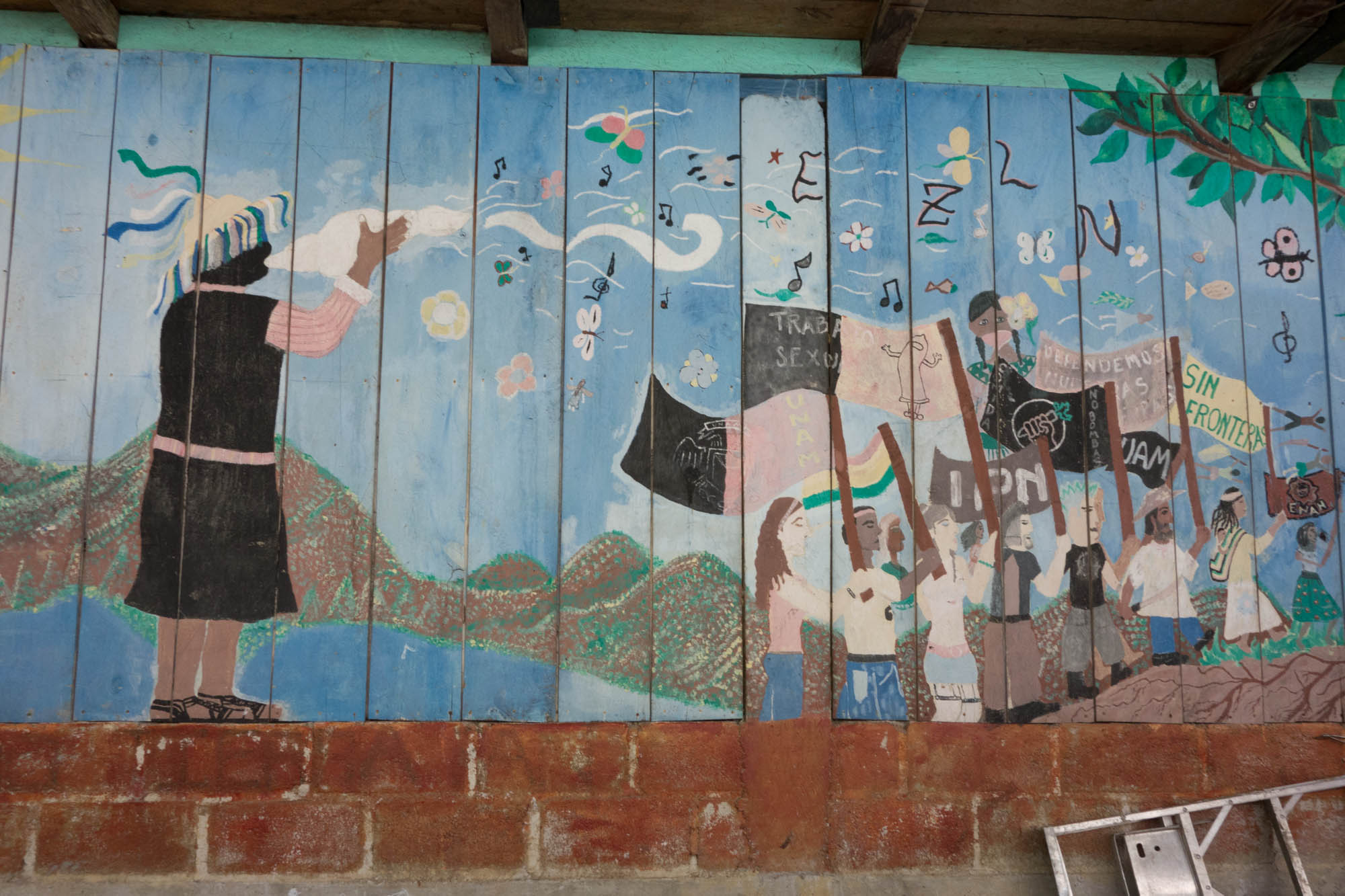
Discussion of "The Murals at Oventic: A Photo Essay"
Add your voice to this discussion.
Checking your signed in status ...